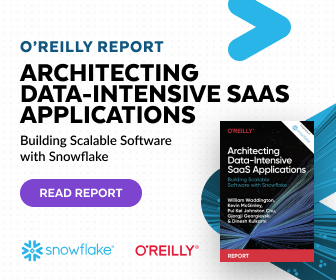Maximize the Value of Data with Analytics Applications
By 2026, the global business intelligence and analytics software market is expected to reach $55.48 billion. Data is being generated at an unprecedented pace, and everyone wants to make use of it. But when inundated with an overwhelming volume of data, it’s difficult to extract meaningful insights. Analytics applications help cut through the noise by uncovering patterns, trends, correlations, and anomalies that reveal answers to pressing questions. In this article, we will examine the importance of analytics applications and share how they can be successfully leveraged.
How Do Analytics Applications Work?
Analytics applications connect to a data source and feature a collection of business intelligence (BI) capabilities that help users better understand their data so they can make smarter decisions. This tool kit may include self-service dashboards, reporting capabilities, and interactive data visualizations.
Analytics applications excel at enabling users to interpret information since data can be difficult to decipher when in the form of raw numbers. Dashboards and visualizations help decision-makers make sense of their data using elements such as graphs, charts, and maps. Analytics applications provide advanced features to provide context that’s difficult to capture otherwise.
Examples of Analytics Applications
Analytics applications allow professionals across many industries to extract more value from their data. When data is displayed in meaningful ways, leaders can make better decisions and advance the missions of their organizations. Here are five real-life examples of how analytics apps are facilitating the transformation of raw data into highly relevant insights.
Cybersecurity
Cybersecurity analytics applications enable security teams to automatically identify and respond to security incidents across their entire attack surface. These apps analyze security-relevant data, allowing teams to track activity, monitor security configuration and data classification changes, and so on. Features such as built-in detection engineering, data correlation, and automatic investigation help teams tackle volume, complexity, and false positives.
Financial Services
Financial analytics apps are used by insurers, banks, investment firms, and other financial services companies. Aggregating and analyzing related data enable companies to track performance, monitor risk, and more.
Healthcare and Life Sciences
Healthcare analytics applications assist hospitals and other healthcare organizations in providing customized care and improving health outcomes. They’re also used by pharmaceutical companies to analyze clinical trial data and other data related to product development.
Marketing
Marketing analytics helps organizations aggregate and unify customer data to form a 360-degree view to better identify ideal customer characteristics and find opportunities to improve the customer experience. These insights can be used to increase retention and improve the ROI of marketing.
Why Build an Analytics Application on a Data Platform?
A data platform enables developers to create and scale analytics applications without operational burden. By investing in a modern stack built around a data platform, developers can resolve the shortcomings of legacy architectures, enable real-time analytics in a cost-effective manner, and deliver fast and reliable experiences to their customers. Here are three reasons why a data platform is foundational for analytics apps.
Decoupled resources
Apps should scale compute resources independently and linearly for each job without manual intervention or disruption. When technology “building blocks” are separated by design, resources can scale instantly as needed. This decoupling enables optimization that’s fast and efficient, meaning applications never miss SLAs. Decoupling also enables virtually unlimited concurrency so you can run multiple queries against the same data without conflict.
Developer tooling and automation
Applications must scale with ease and enable developers to plug in services rather than re-architect them with each addition. While traditional data platforms require a lot of manual heavy lifting, modern stacks leverage APIs to connect with other services in the data ecosystem. This “building blocks” approach to development provides speed and eliminates unnecessary complexity.
Security
Security must be baked into the architectural design to enable fast development while protecting against present-day security threats. Modern stacks address this dual need by providing fine-grained, role-based access control for data and actions, always-on encryption of data stored in the cloud, and automatic protection against accidental or malicious loss of data.
Elasticity, self-service, and pay-as-you-go
The architecture should enable apps to adapt to workload changes by growing or shrinking resources dynamically and automatically. With a modern cloud-built architecture combined with a consumption pricing model, organizations can start small, increase usage as appropriate, and benefit from auto-scaling to ensure resources are allocated as needed.
Snowflake for Data Applications
Snowflake is purpose-built for application development and has the ability to automatically scale compute resources up and down for virtually unlimited concurrency without affecting performance or reshuffling data. Snowflake lets developers accelerate the pace of product development with tools designed to make it easier to build, test, and deploy their data-intensive applications. As a fully managed service with automations, Snowflake allows you to focus your full attention on product innovation, not managing the underlying infrastructure.
